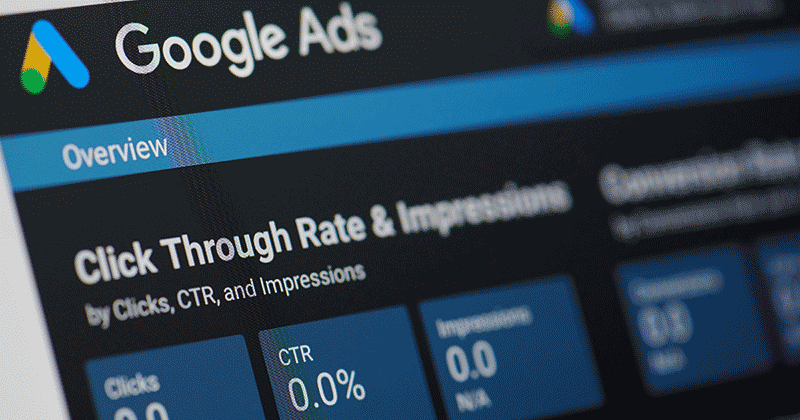Things of Note
eBay’s getting racy
If you’re hosting contextual eBay ads on your site, now may be a good time to go take a look at them and see if they’re appropriate to your site or if they’re the kind of ads that will get people a little hot and bothered.
Barry Schwartz got a little surprise when he noticed some racy eBay ads on friend Jeremy Shoemaker’s site. The ad was part of eBay’s AdContext program, and though contextually relevant, included an image that didn’t seem to fit Jeremy’s listing or his audience.
After receiving a horde of email on the subject, Jeremy was forced to respond:
“Yes the ads on the right are eBay ads through commission junction. They are contextual looking but I opted to use the keyword version targeting, specifically "search engine seo" and not the contextual engine which would violate TOS with google/ypn if i wanted to use them. (similar to chitika)”
Clearly merchants are the ones responsible for what kind of image appears alongside their ad, but is there really no way for eBay or people like Jeremy to monitor what is being displayed? That seems like a dangerous business proposal to me.
Friendster looking for older, wiser friends
You remember Friendster, don’t you? It’s that social networking site that was all the rage about four years ago before Facebook, MySpace and Xanga stole its thunder? Well, Friendster called, it wants its audience back.
Yesterday, the folks behind Friendster announced they had received a total of $13 million in venture funding to revitalize the dying site. Friendster will be revamped to focus on the “post-college crowd in their 20s and 30s, looking for updates on their friends, their careers and their whereabouts”. I guess it will be an older and wiser MySpace then?
[Sidenote: I love the fancy “looking for updates…” terminology. Why can’t we just call it what it is – stalking old flames and former best friends.]
What do you think? Can Friendster come back from the dead? Will users latch on to yet another social networking site when everyone they know is already on MySpace? I’d say they have a shot. People rack up social networking accounts like they won’t be around in four years. Oh, wait…
Google MP3?
Digital Inspiration’s Amit Agarwal came across a Gmail-powered MP3 player that plays MP3s straight through the Gmail interface without having to download the MP3 or open up an external media player.
“Digging around”, Agarwal discovered it’s the Google Video player that is responsible for playing the audio file. To enable it, all users have to do is use the secret URL below and insert the location of their favorite MP3 at the end of the link.
http://mail.google.com/mail/html/audio.swf?audioUrl=
Pretty sweet, I say. Phil Lenssen takes it one step further and embedded an MP3 player straight onto his site that lets users easily replace the audio file with one of their favorites. Here it is with the blogging anthem.
It’s a signals game
Bill Slawski started a great thread over at Cre8asite that talks about the engines’ use of “signals” in determining relevancy and understanding user queries. I guess Bill heard the word “signal” one too many times during SES for him not to take notice. He believes the engines use click patterns to identify which sites are the “most popular” and should therefore receive a higher ranking. The thread is a Must Read, as Bill and others do some very interesting theorizing.
Don’t be a Scoble
Over at 9rules, Mike Rundle gives a good argument for why you don’t want to be a Scoble, a Boing Boing or a Seth Godin. According to Mike, emulating yourself after anyone on the Technorati 100 is never a good idea because most of the blogs on that list are there because of external factors, not because of the quality of their content.
“I’d say that most of the Technorati 100 are on there because of external factors that have nothing to do with their content. Scoble worked at Microsoft for awhile which gave him certain notoriety, Boing Boing has been around forever and is edited by veritable Internet superstars, TechCrunch rose to popularity because Michael was intimately involved in the startup scene before he started blogging and brought his connections with him, The Huffington Post is run by Arianna Huffington and she’s famous, Seth Godin’s blog is there because Seth is a well-known author and speaker, and so on.”
Not to say that these blogs don’t have excellent content, because a lot of them do (we bow to Seth Godin), but that’s not why they’re widely read. They’re read because of all the word of mouth and notoriety that goes along with being a Famed A-List Blogger. You’ve seen the pics from all the cool parties.
Instead of trying to be the next Matt Cutts, target your blog as a niche blog, because that’s where your audience is. Focusing on the long-tail will help your blog find readers who are there because of the quality and “allure” of its content, not because you’re famous in some little circle. It may also help keep you useful, if you’re into that sort of thing.
26,000+ professionals, marketers and SEOs read the Bruce Clay Blog
Subscribe now for free to get:
- Expert SEO insights from the "Father of SEO."
- Proven SEO strategies to optimize website performance.
- SEO advice to earn more website traffic, higher search ranking and increased revenue.

Comments are closed









